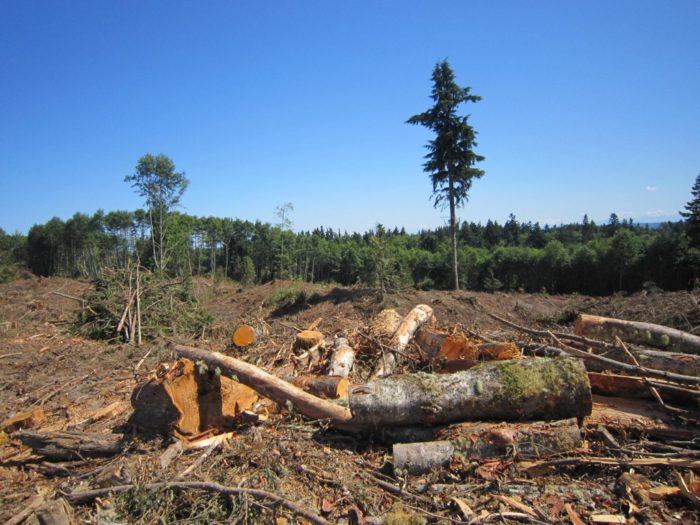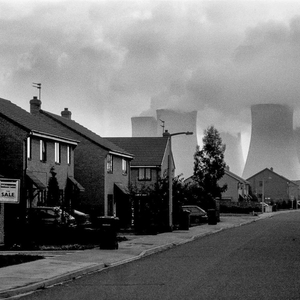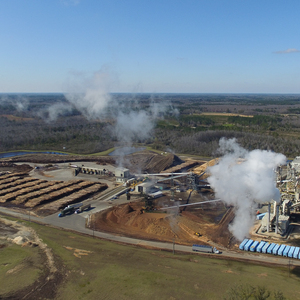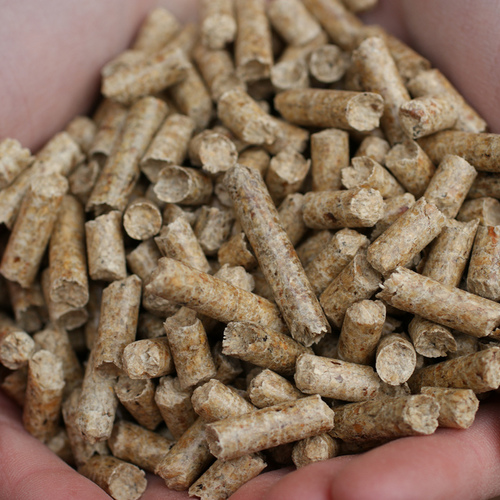
Image Credit: Polly Peterson / CC BY 2.0 / Flickr
Since 2010, the Natural Resources Defense Council’s Our Forests Aren’t Fuel campaign to save southeastern forests from logging for bioenergy has sounded the alarm about this issue and targeted the European Union for reform.
In 2009, the EU passed binding legislation to ensure the EU meets its climate and energy targets, including a 20% reduction in greenhouse gas emissions, a requirement that 20% of EU energy be generated from renewable sources, and a 20% improvement in energy efficiency, all by 2020.
While laudable, the policy package came with a gaping loophole around bioenergy: all biomass, whether wood chips and sawdust from a sawmill or whole trees from old-growth forests, was considered “carbon-neutral.” In other words, when biomass is burned in European power stations, the EU acts like the carbon emissions coming out of the smokestack simply don’t exist.
And we’re talking about a lot of emissions. The latest and best science tells us that when we burn many forms of biomass for electricity — in particular whole trees and other large-diameter wood — carbon emissions increase for decades compared to coal. Today, nearly two-thirds of the EU’s renewables target is being met by burning biomass.
Most wood pellets originate in the U.S.
As the European Commission called an international stakeholder meeting to consult on the future of its bioenergy policy, I traveled to Brussels to attend and to bring NRDC’s evidence to the table. Overwhelmingly, the biomass we’re burning is coming from the wood pellet mills of the U.S. Southeast. The region is now the world’s top exporter of wood for energy production. Misguided bioenergy policy in the EU is driving demand for wood pellets from these forests, putting millions of uncounted tons of carbon into the atmosphere and putting at risk some of the world’s most biodiverse and precious forests.
On the way to the Commission building came a sobering moment when we passed Maelbeek Metro Station, where flowers reminded of the recent bomb attack. Once past security and inside the building, we arrived in an oval-shaped room packed with EU politicians, scientists, and representatives of industry and civil society.
Right at the top, the European Commission’s representative acknowledged the remarkable fact that more than 56,000 supporters of NRDC and its allies had written to the Commission to express their concern about the destruction of U.S. forests, asking them to stop incentivizing the use of trees for fuel in EU renewable energy policies.
After that, much of the day was taken up by bioenergy industry representatives restating their positions, at one point provoking unintentional hilarity when citing the production of oxygen by plants as an argument to continue unabated bioenergy incentives.
But then the science panel was called and made some remarkably clear statements: Despite some disagreement over exact figures for various bioenergy scenarios, they all agreed that bioenergy is not carbon-neutral. (One scientist sneakily called it “70% carbon-neutral,” which of course means not carbon-neutral).
The facts on carbon neutrality
NRDC had recently demonstrated the real carbon emissions of using wood pellets sourced from Southeastern forests to produce electricity used for bioenergy, which found that when pellets are comprised of anywhere from 40% to 70% whole trees, it takes approximately 55 years for forest regrowth to recapture enough carbon from the atmosphere to reduce a power station’s cumulative emissions below those of coal. At levels greater than 40%, pellets emit more carbon than coal for most of this period.
Echoing these findings, Lisa Marelli, the scientist from the EU Commission’s own research body, the Joint Research Centre (JRC), demonstrated that the use of forest biomass can actually result in a worsening of climate change over a period of over 40 years or more (depending on decay rates were that biomass to instead be left on the forest floor).
Asked whether bioenergy can be assumed carbon-neutral, Marelli responded with an emphatic “definitely not.”
These are strong words from a representative of the Commission’s own research body. Unfortunately, they are in direct conflict with current EU policy, which still assumes all bioenergy to be inherently carbon-neutral and encourages EU member states to subsidize it as such.
Over the course of the day, the European Commission also heard evidence from stakeholders on the negative impacts on biodiversity and on affected communities. Staff from allied European NGOs and I were able to relay how, on a recent trip to the Southeast, we saw firsthand the devastating clearcuts of threatened bottomland hardwood forest that previously had been teeming with wildlife.
Decision due by the end of the year
We simply can’t wait decades to begin reducing carbon emissions from our power sector, all the while destroying the very forests that are one of our best tools for fighting climate change and providing a host of other ecosystem services. The question now is: How will the European Commission respond to this evidence, including its own research body stating that bioenergy is “definitely not carbon-neutral”?
Today, millions in European taxpayer resources — money that could be used to support truly clean energy technologies, such as solar and wind — is wasted on a dirty form of electricity that destroys forests and worsens climate change rather than mitigating it.
A proposal on how to reform EU bioenergy renewables policy is expected by the end of the year. In the meantime, we need to keep the pressure on policymakers and make sure the EU’s 2030 climate and energy package does not continue to drive the destruction of U.S. forests in the name of renewable energy.
Kenneth Richter is a consultant to NRDC based in Germany. He has been working on biomass issues for eight years. This post originally appeared at the NRDC blog.
Weekly Newsletter
Get building science and energy efficiency advice, plus special offers, in your inbox.














3 Comments
Slow Down (or what is our time horizon?)
I happen to hang out with someone from the forestry industry who cares as much as we do about thinking carefully about all this. I asked, and here is what he shared:
This is fairly straightforward stuff from NRDC. They make a simplified argument in public and then in private admit they aren’t revealing the whole story.
Biomass is not carbon neutral over the short term. Nothing is, including solar. You expend energy and emissions to make a solar panel. After you install it you are offsetting the emissions you would have created if you had burned oil for energy. At some point you are in positive territory – probably a few months to a few years for solar. The same is true for wood, except it is much more complicated to model because the forest you took the wood from is recapturing the carbon.
The real question is what is the payback time for each of these approaches and how do those payback times relate to climate change and our goals to mitigate it.
NRDC and others believe we can’t use any form of energy that doesn’t help mitigate climate change in 20-30 years. The assumption here is that the world can and will go carbon free within that time frame. In my opinion that is ridiculous and it is never going to happen. Therefore, a logical and long term environmentally appropriate approach to future generations is to take a realistic and positive perspective on when the ENTIRE world will go carbon free. The earliest I can in any way envision is 50 years and that is wildly optimistic. So wood for heat has a payback of 8-12 years. That is acceptable. Wood for electric has a payback of 40-60 years in many scenarios. Maybe we shouldn’t be doing that and should be funneling our wood to heat or to creating engineered wood that can give us a big and short term climate impact.
The other aspect of NRDC’s rant is that “forests are being destroyed”. That is not the case in most harvesting. The forests are harvested and grow back and most of the biomass is coming from forests that will replenish the carbon. This is the role of forestry and foresters.
Bottom line: 1. biomass can potentially come from sustainably managed forests and most of it is. 2. Biomass is not carbon neutral in the short term, if it comes from sustainable forests it does have a positive effect on carbon and mitigates the climate over the long term. The question is whether the long term payback fits in to realistic climate goals.
The big question is: will NRDC go after the concept of harvesting forests to build more wood buildings with the same slanted zeal they go after biomass?
Not surprised in the long payback for biomass as energy.
There's no amount of environmental regulation that can overcome the laws of physics. Burning wood for heat is fairly straight forward because the amount of energy to harvest, transport, convert the wood into heat is comparative low vs when wood used to generate electricity which is then used to generate heat. The argument against wood burning as heat revolves around localized airborne pollutants.
As for the forest are being destroyed? Who knows. Sure there's an argument that losing biodiversity of forests is a bad thing. Gov't regulation has a direct impact upon that by altering the laws of supply/demand. An artificial increase in demand (gov't mandate to generate X percent power from biomass) should cause an expansion of pine forests* within the SE US. We've seen a similar situation play out with regards to corn and ethanol.
*If you ever want to get a glimpse of what this looks like drive to Birmingham Alabama and head north.
Will the NRDC go after stick built buildings? Who knows. I've always been of the opinion that the ultimate policy goal to save the planet is to basically do away with single-family dwellings and cram everyone into dense urban centers.
That won't work either because the problem isn't climate change but population growth and feeding billions of people on a meat based western diet. NRDC worried about a lack of forest diversity? They should think monoculture on steroids were the forests are replaced with row of corn, soybeans, herds of cattle, chickens, pigs, etc..
"Will the NRDC go after stick built buildings?"
I certainly hope not. There's absolutely no equivalence between burning wood for fuel - whether for heat for for electrical power - and lumber use in the construction industry. Wood as fuel releases carbon immediately, wood in construction locks up the carbon for 60-100 years or even longer if demolition material is able to reenter the use cycle or even just anaerobically buried in the landfill. Sure there's more to it than that but other things being equal (harvesting, processing, transport etc.) surely we should be maximizing the use of sustainable forest products in the construction industries as a long-term carbon capture strategy. Achievable carbon positive, not dubiously carbon neutral.
Log in or create an account to post a comment.
Sign up Log in